TOP Yucatan Foods: Discover the 21 Most Beloved Dishes

As you’ve probably heard, Yucatan foods are delicious, varied, and have exotic touches that will surprise you.
The exquisite taste that characterizes it depends precisely on the combination of recipes and ingredients that give its origin.
This cuisine is derived from the Spanish and Mayan cultures.
Its typical flavors are recognizable throughout Mexico due to the predominance of strong seasonings used in most recipes.
Corn is also an essential component of Yucatan foods and is abundantly consumed.
I invite you to join me on this tour of the 21 best Yucatan foods, hoping that you will soon be able to visit the Yucatan peninsula and enjoy them all!
TOP 21 Foods in Yucatan
1. Cochinita Pibil, a classic of Yucatan Foods
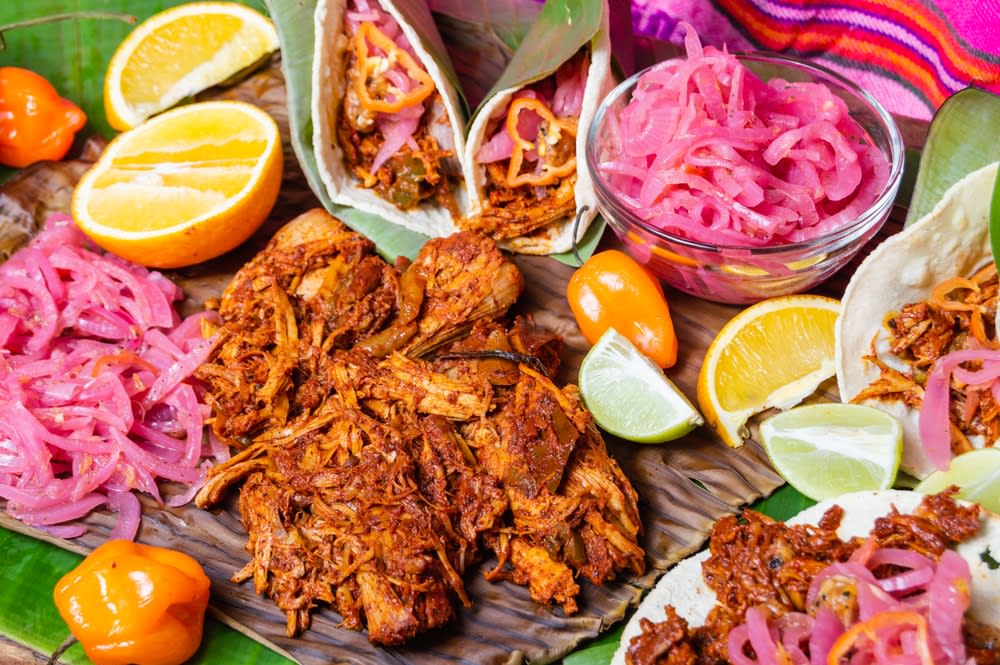

Let’s begin our gastronomic tour with the recipe that tops all the lists of dishes from this beautiful Mexican state: cochinita pibil.
The star dish of Yucatecan cuisine and one of the inaugural dishes of the gastronomic encounter between Mexico and Spain.
The pork is marinated with achiote and cooked in an earth oven wrapped in banana leaves.
It is seasoned with a sauce based on red onion and habanero chili in sour orange juice.
The cooking technique is of pre-Hispanic origin, as the Indians used it to prepare pheasants, guajolotes, and wild boars.
It is usually eaten with corn tortillas and tortas. The earth ovens give a unique charm to the dish, but they can also be prepared in a regular stove oven.
2. Papadzules

Papadzules are an icon among the typical dishes of Yucatan.
A kind of Yucatecan enchilada filled with boiled egg and a dressing made with pumpkin seeds and epazote.
A tomato and habanero chile sauce can also be added.
Other fillings are based on chicken, cheese, and pork.
This tremendous Yucatecan delicacy is eaten in Yucatan, Quintana Roo, and Campeche and is common in restaurants and food stands in Merida and other peninsula cities.
Papadzules are garnished with onion slices and habanero peppers.
3. Frijol con Puerco (Beans N’ Pork)
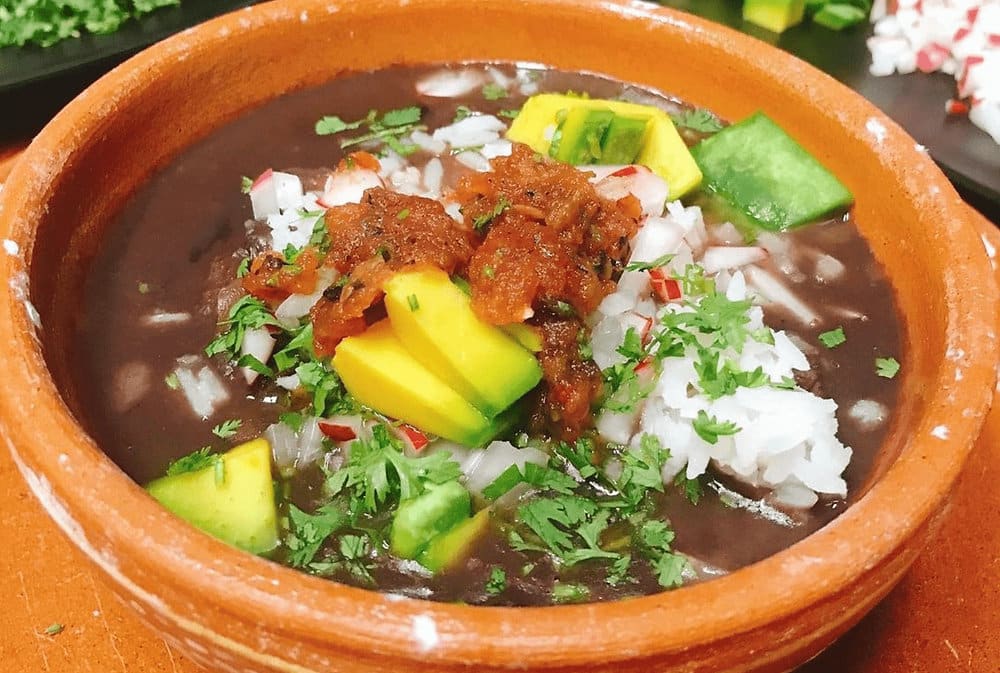
Many Yucatecans, faithful to their traditions, have the custom of eating beans with pork on Mondays.
Although it is still unclear how the habit began, one account indicates that Yucatecan housewives preferred to start the week with a succulent and easy-to-make meal and prepared frijol con Puerco (beans and pork stew).
This was another of the dishes with which the indigenous Yucatecans started using pork brought by the conquistadors.
You may want to read: 12 Best Non-Alcoholic Mexican Drinks to Try in 2023
The recipe includes black beans, pork, epazote, and onion.
It is accompanied by chopped radish, cilantro, avocado, and chiltomate sauce prepared with tomato, habanero pepper, and garlic.
There is no shortage of good frijol con Puerco in Yucatan restaurants at the beginning of the week.
4. Spicy Yucatan Foods: The Relleno negro
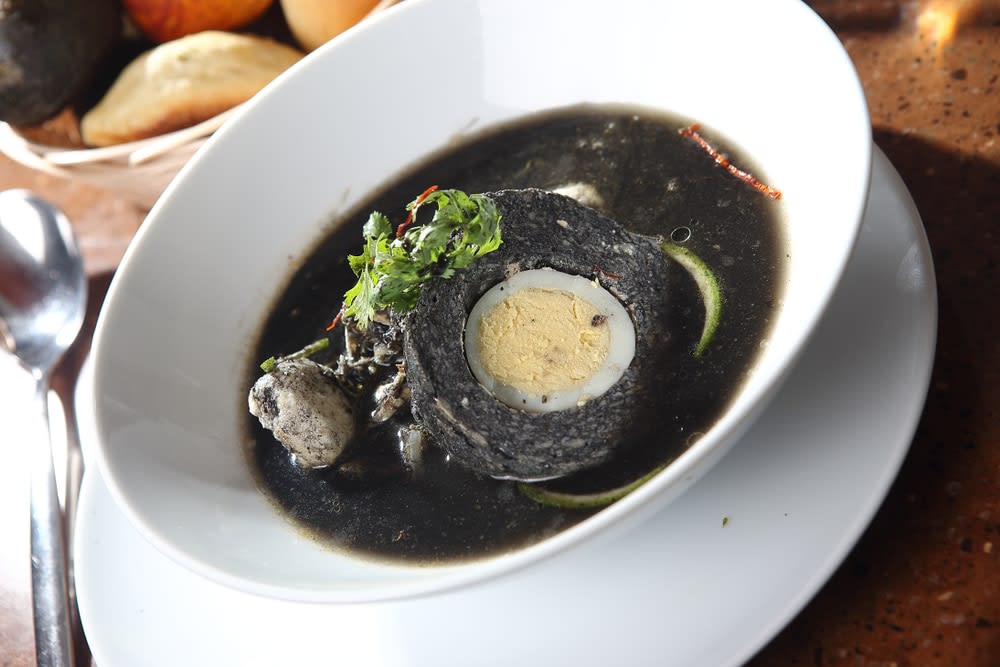
The Relleno Negro (or chilmole) is one of the most substantial and spicy dishes in Yucatecan cuisine.
It is also called chilmole because the toasted chili bell pepper dressing gives it its characteristic black color.
The original recipe is prepared with guajolote (turkey), ground pork, chilmole, tomato, achiote, garlic, epazote, oregano, boiled eggs, and various spices (pepper, cumin, cloves).
The black stuffing is eaten like cochinita pibil, in tacos or with tortas, even with panuchos and salbutes.
It is traditionally prepared for Hanal Pixán (“food of the souls” in the Mayan language), a festival celebrated between October 31 and November 2 (Day of the Dead).
5. Chicken Mukbil or Pibilpollo
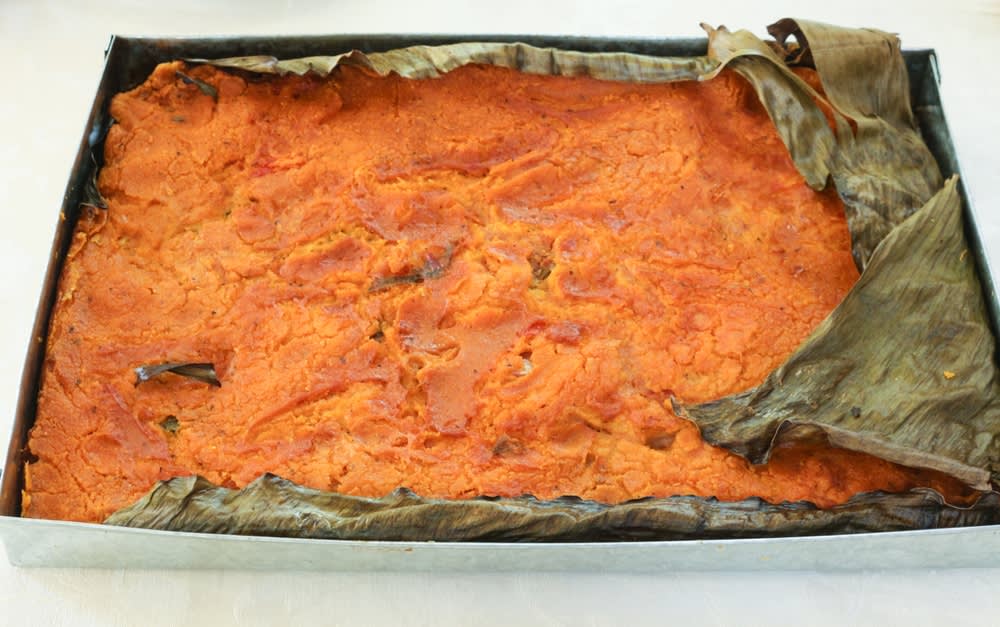
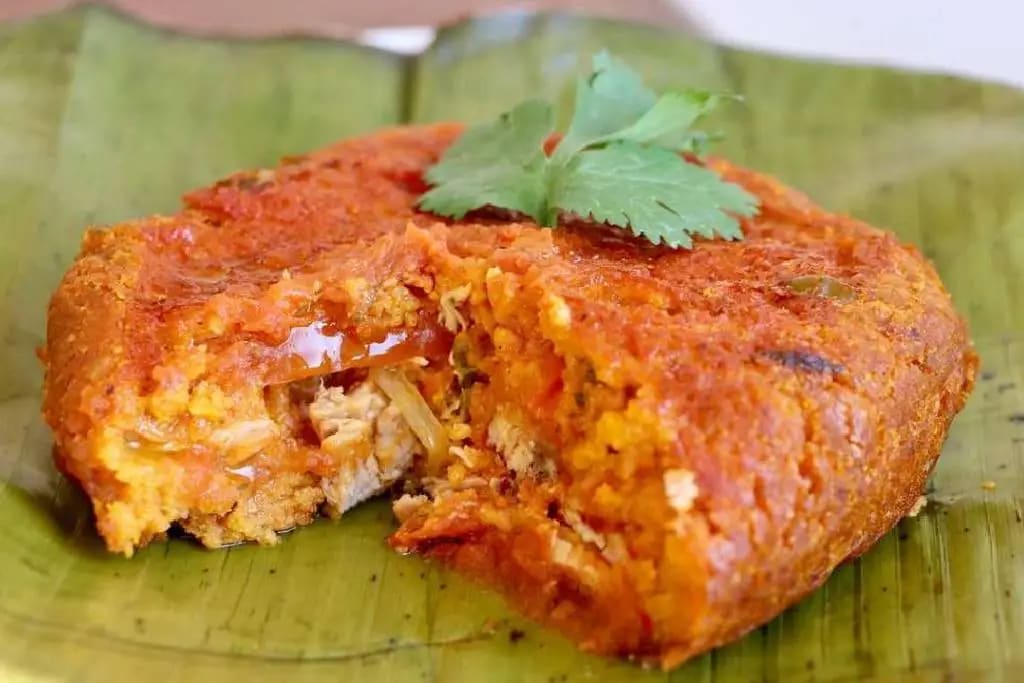
If you find yourself in the Yucatan Peninsula for the Day of the Dead, you will surely hear about chicken mukbil, a giant tamale baked and prepared to commemorate the dead.
Like cochinita pibil, the tradition is to bake it in an earth oven, but the demands of modern life have imposed the stove oven as the cooking medium.
The pibilpollo is prepared with chicken, corn dough, lard, and various seasonings.
According to Mayan custom, it is wrapped in banana leaves to cook it slowly underground.
Habanero chile sauce is one of the most commonly used garnishes. Muxbil derives from the Mayan word “muk,” which means “to bury.” Campechanos use the name pibilpollo.
6. Motuleño Eggs: One of the best Yucatan breakfast foods
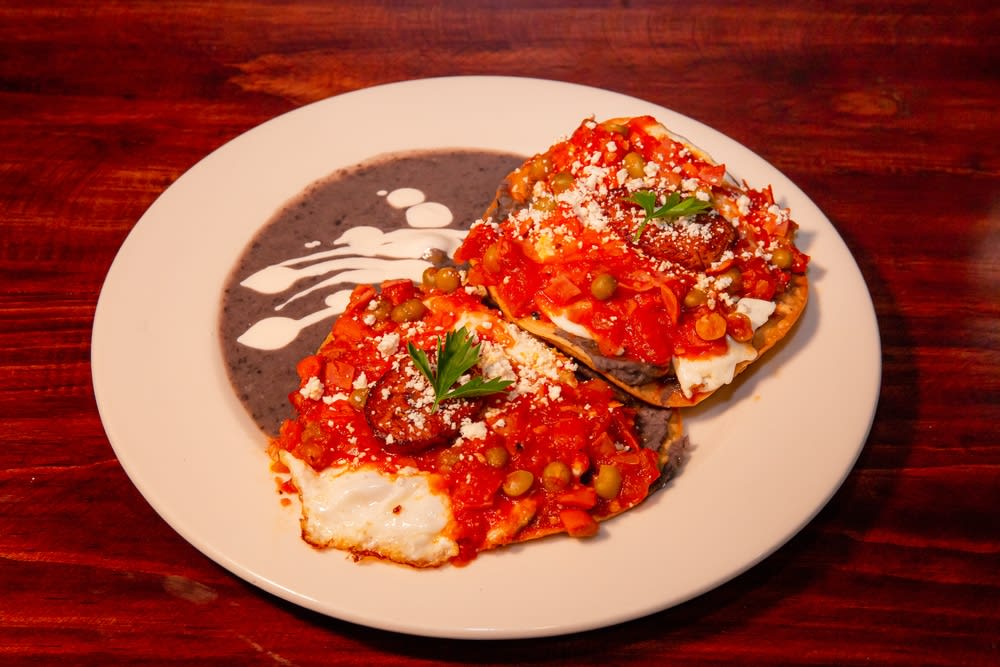
Motuleño eggs originated in the Yucatecan town of Motul and is the typical breakfast in Yucatan.
It consists of 2 fried eggs placed on tortillas with beans seasoned with a dressing prepared with tomatoes and chili peppers.
Adding avocado, plantain slices, and a little cheese will make your day!
This breakfast became traditional in Yucatan.
But if you want to try the original ones, you should go to Motul, north of Yucatan, 43 km northeast of Merida.
All the restaurants in Motul claim to prepare the best sauce for the eggs that made the town famous, including Doña Elvira Huevos Motuleños and Cafetería Soberanis Arce.
7. Papaya candy
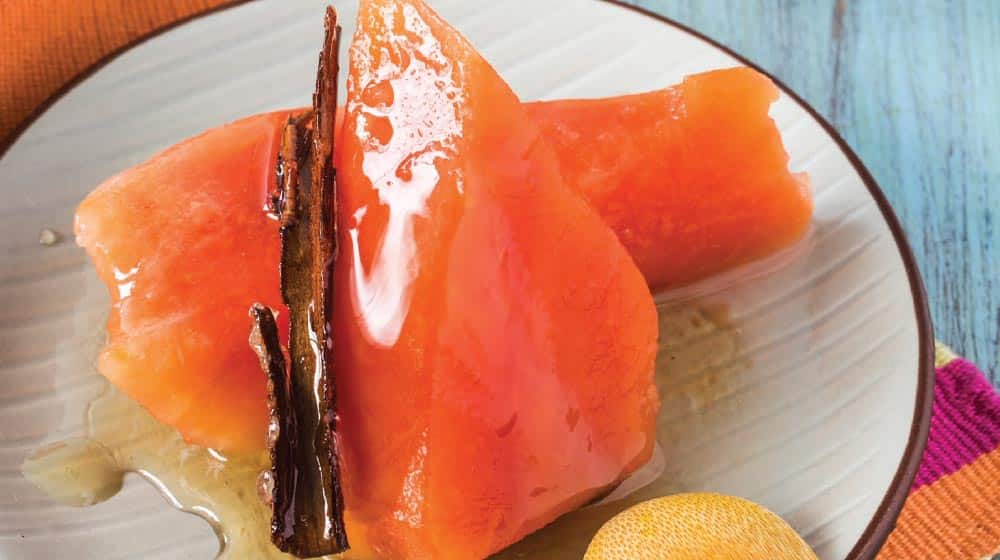
This is one of the most common desserts in Yucatan that you will easily find in restaurants and take-away artisan preparations.
Papaya is a tropical fruit also called lechosa, frutabomba and melon de árbol.
It is delicious when ripe, but the sweet is made with unripe papaya, preferably tender.
The fruit is peeled cut into slices and softened for several hours in water with baking soda.
Then it is slowly cooked with piloncillo or sugar, a little water, cloves, and cinnamon until the papaya softens.
It is packed in previously sterilized glass jars when it cools, and the released pectin ensures long conservation.
8. Tikinxic-style fish
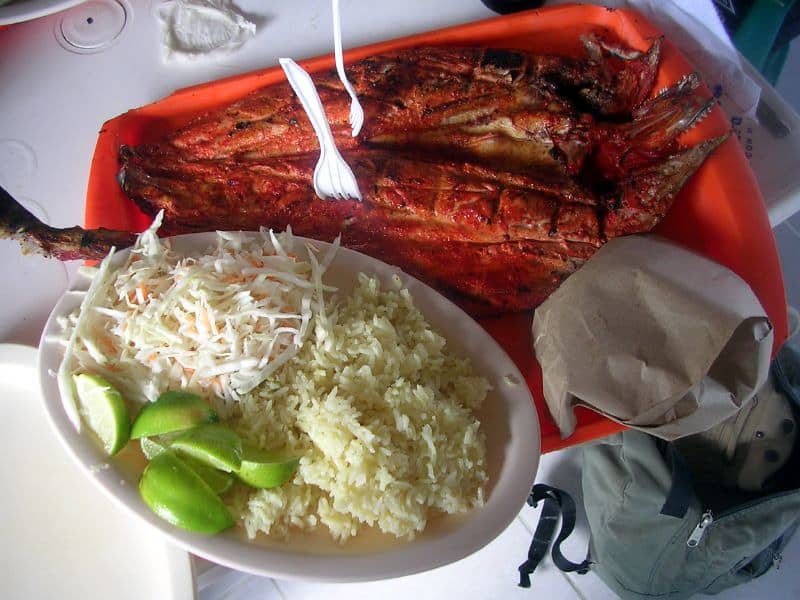
Yucatan has 340 km of coastline facing the Gulf of Mexico, so fish is part of the regular diet, especially in communities on or near the coast.
The original Mayan recipe for fish a la tikinxic is to marinate a whole piece in an achiote sauce, wrap it in banana leaves and cook it in an earth oven or wood fire.
The achiote adds flavor and a characteristic reddish color to the recipe, like in cochinita pibil and pibilpollo.
In Yucatan, there are excellent beaches such as Puerto Progreso, San Crisanto, Chelem, Puerto Chicxulub, and Puerto Chuburná.
In all of them, you can enjoy tikinxic fish prepared with grouper or other tasty species.
9. Poc Chuc
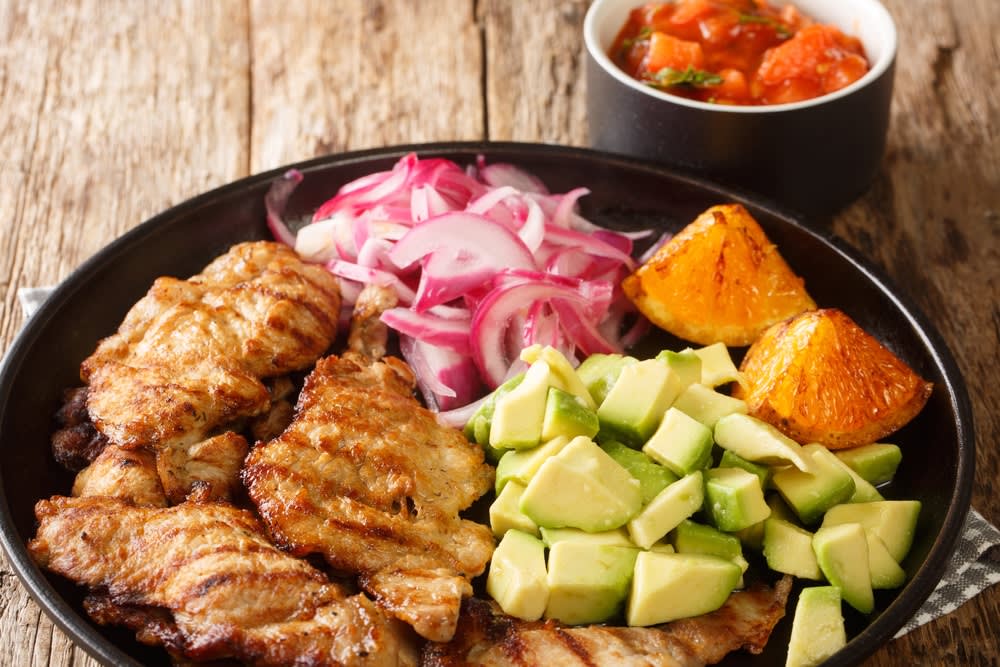
The sour green orange is a fundamental product of Yucatan’s gastronomy, and almost every Yucatecan with a piece of land has an orange tree planted.
This orange grows easily in any soil, is the most fragrant species of the citrus genus, and is very resistant to diseases and pests.
Poc Chuc means “to roast over the embers” in the Mayan language, and in this pork-based recipe, mainly pork chops, the pieces are marinated in sour orange juice and cooked on the grill.
The usual accompaniments are rice, tomato, grilled onion, and cilantro.
They are salted with a dressing of sour orange juice, raw onion, tomato, and cilantro.
10. Lima Soup
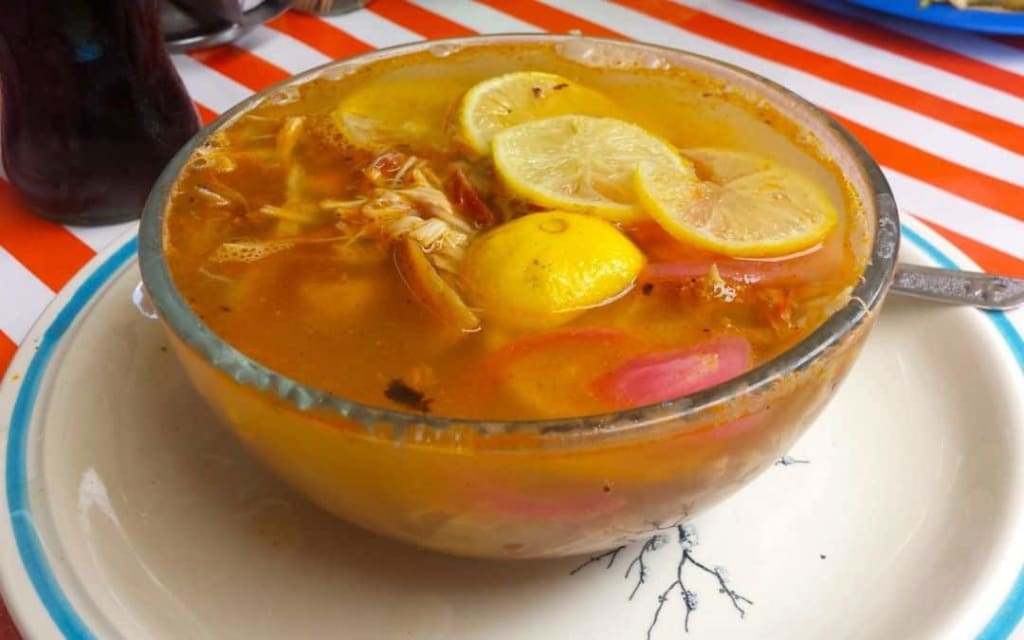
Lime, or lima soup, is a classic Yucatecan dish.
The lima is milder and has a more delicate sweet aroma than lemon. Chicken, lime juice, garlic, onion, and aromatic herbs are used to prepare the soup.
The sweet citrus gives the characteristic flavor to this chicken broth, perfect for warming the body on cold nights. It is also light, nutritious, and effortless to make.
It is served with lime slices, cilantro, and fried tortilla chips.
The tortilla chips add consistency to the broth and are a tasty way to use up no longer fresh tortillas.
PLEASE NOTE: In Mexico, a lima (lime) is sweet in flavor, not sour like a lemon.
Here’s the breakdown of the most commonly used lemons in Mexico:
- Keylime: Small green shape with a strong citrus taste
- Persian lime: Medium to large green shape with a mild citrus taste
- Lima: Medium to large green shape with a sweet taste
- Yellow lemon: This is the standard American lemon. Although you can find it in Mexico, it is not used in traditional Mexican cuisine
11. Escabeche Oriental
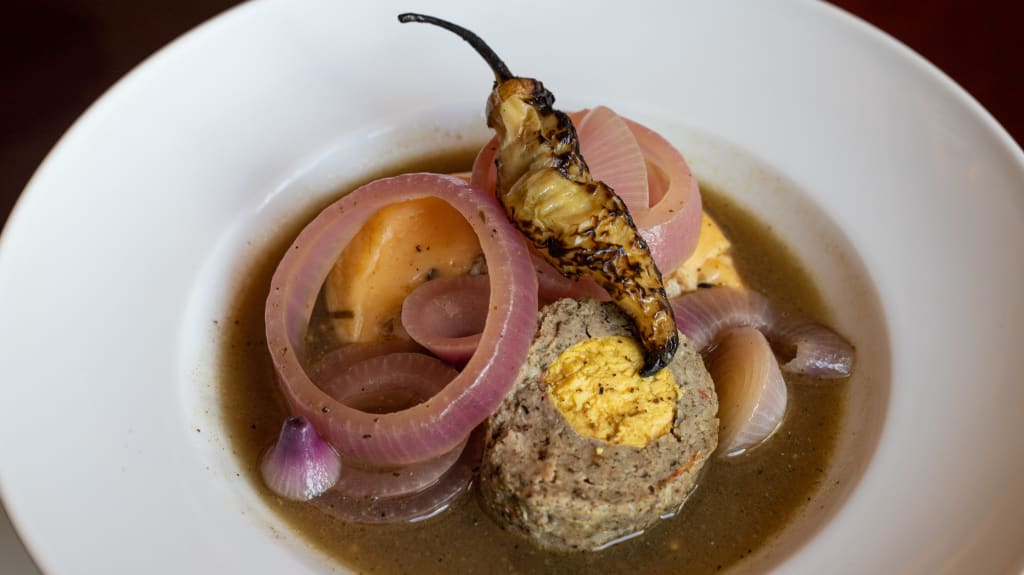
This dish is typical of Valladolid, in eastern Yucatan, which is why it is called escabeche oriental.
The original recipe is with turkey, although chicken is also used.
First, the poultry is marinated in vinegar, garlic, coriander, cinnamon, cloves, pepper, cumin, and salt.
After marinating, the turkey or chicken carcasses are cooked in sour orange juice, water, and onion slices and then fried in lard or oil with garlic, salt, and oregano.
The bird is left crispy and is eaten with a topping of julienned onion and xcatic chiles, typical of Yucatan.
12. Brazo de Reina (Queen’s arm)
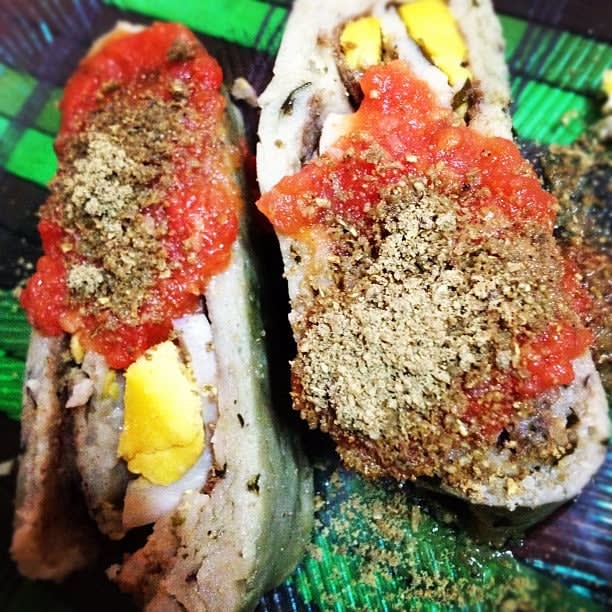
Huge tamale made with corn dough and filled with egg, chaya leaves, pumpkin seeds, and tomato.
Chaya, also called spinach tree, is a species widely used in the cuisine of the southeastern region of Mexico for its flavor and nutritional power.
The piece is wrapped in banana leaves for steaming.
It is presented as a giant tamale from which slices are cut to be served, garnished with a sauce based on epazote and tomato.
Queen’s arm is a traditional dish during Lent and the Day of the Dead.
It is much appreciated by the Yucatan peninsula’s indigenous population, also called “Brazo de India.”
13. Tsi’ik of Deer
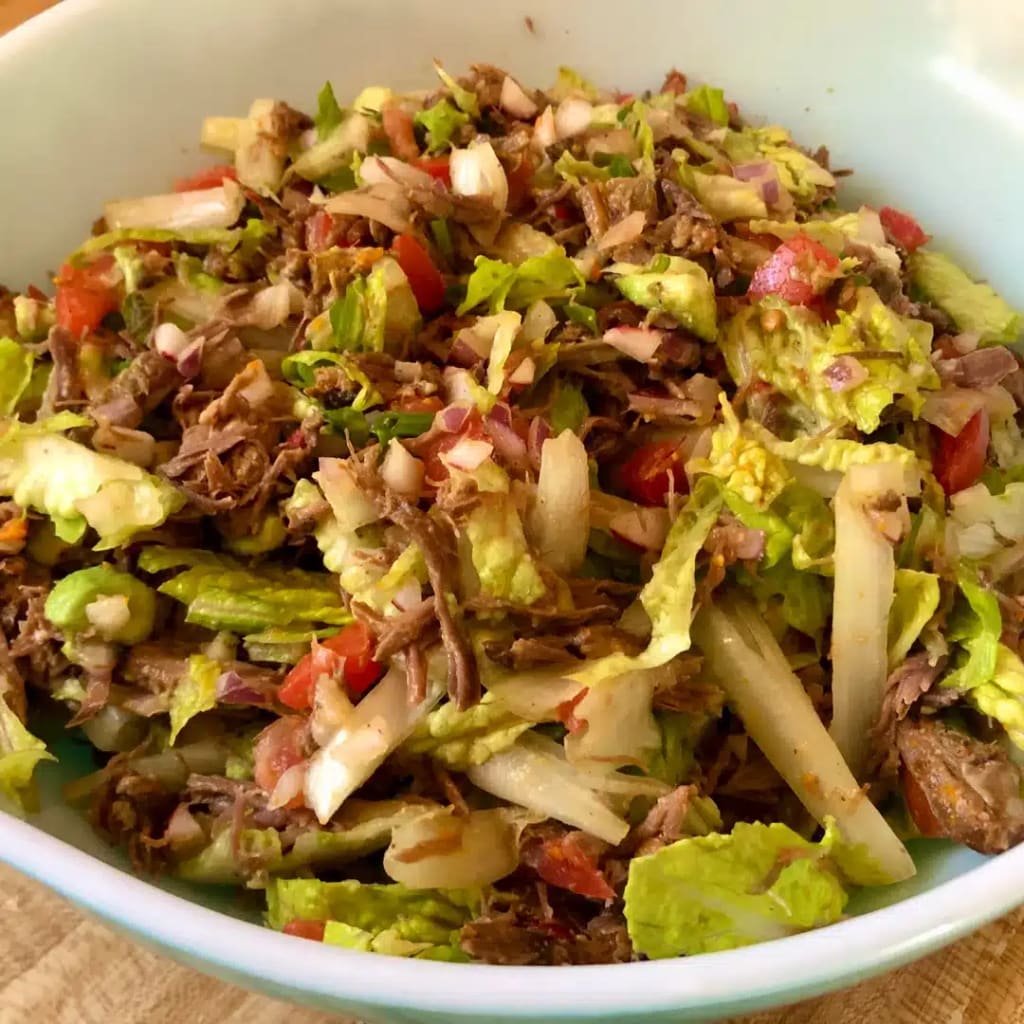
The Mayan word “tsi’ik,” means “to shred meat,” and the most used in this recipe of Yucatecan gastronomy is the deer, the representative animal of the state of Yucatan and central figure of its coat of arms.
In Yucatan, no permits are required for deer hunting and the activity is a tradition and means of subsistence for its Mayan communities.
The deer meat is cooked, shredded, and seasoned with a dressing of sour orange juice, radish, tomato, red onion, lettuce, habanero chili, and cilantro.
The most commonly used species are white-tailed deer and yuk or temazate deer, abundant in the Yucatan mountains.
14. Yucatan Foods: Longaniza de Valladolid
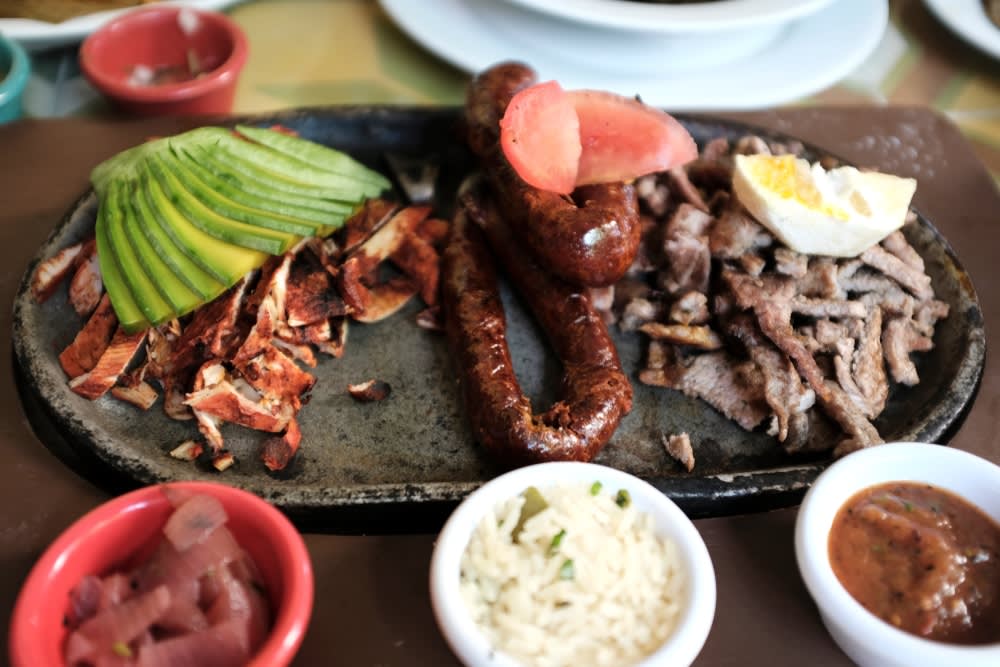
Another iconic Yucatecan food is longanizas de carne de puerco (pork sausages).
The pork sausages were brought to Mexico by the Spaniards, and the Mexicans added their chiles.
Chiles are used less in Yucatan foods than in other regions of the country, using red recado (a paste made with achiote and other spices) and achiote paste as marinades.
In addition, Yucatecan sausages are drier.
Longaniza is a typical delicacy on the tables of Valladolid and other towns in the eastern Yucatan peninsula.
Eating it with a curtido (pickled) of onion, cilantro, and a sauce of sour orange juice and roasted tomatoes is customary.
15. Almond marzipan
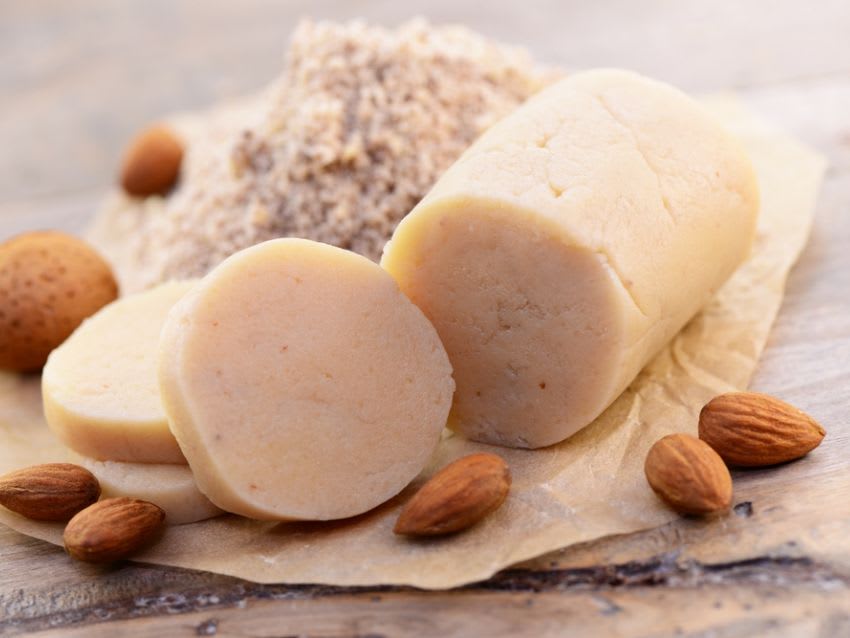
A typical Yucatecan sweet made with crushed almonds and syrup, is prepared by boiling a mixture of water, honey, and cinnamon until it reaches the desired texture.
After combining the ingredients in a round baking dish, it is baked. When ready, it is flavored with rose essence, and additional pieces of almonds can be added.
Marzipan is a delicious and nutritious sweet mentioned in The Thousand and One Nights as a “morsel from heaven.”
Learn more about Mexican candies
It was brought to Spain by the Arabs, and the conquistadors brought it to Mexico, where it was made with pumpkin seeds.
One of the most famous in Yucatan is prepared at Las Simón Mazapán de Almendras, on Calle 9, No. 108, in Colonia San Antonio Cinta, Merida.
16. Kibis

Yucatecan kibis is a culinary jewel bequeathed by Syrian-Lebanese gastronomy.
In the Middle East, this dish called kibbeh, quebbe, and kupe is known as kibis, keep, or kipe in Mexico.
It is the national dish of Lebanon prepared with something similar to elongated meatballs with wheat dough and a ground meat filling.
They are fried in abundant oil until a hard crust is formed.
Kibis are a common snack in the streets of Merida and other Yucatecan cities.
Yucatecans also prepare them with cheese fillings and other ingredients and are served with a salad made of cabbage, red onion, sour orange juice, and slices of habanero chile.
17. Yucatan style Ceviche
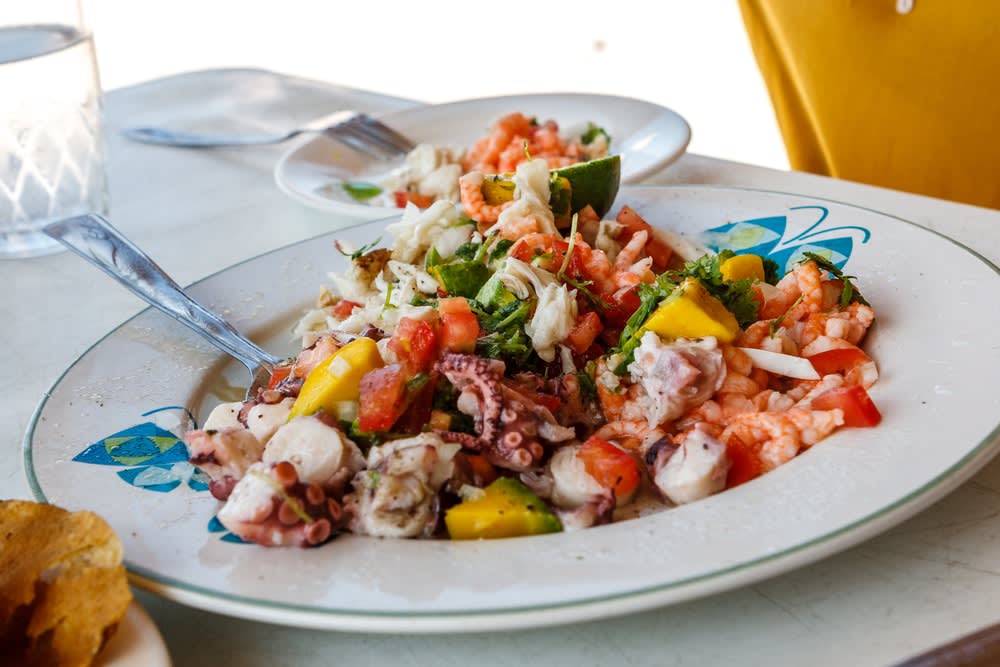
Ceviche is present in the Yucatecan culinary art and all Mexican coastal regions.
A plus of Yucatecan ceviches is the excellent lemons harvested in the peninsula, sweeter than those of other regions.
On the beaches of Puerto Progreso, Ría Lagartos, and Celestún, they are exquisitely prepared with fish and seafood.
Ceviche can be eaten as an appetizer or main dish. It is tasty, refreshing, and nutritious.
A Yucatecan variant is to add to the marinade a shot of xtabentún, a Mayan liquor prepared with honey and xtabentún flowers.
In Merida Yucatan, they make good ceviches in restaurants such as Apoala, Peruano, and the cantina La Negrita.
18. Caballero Pobre
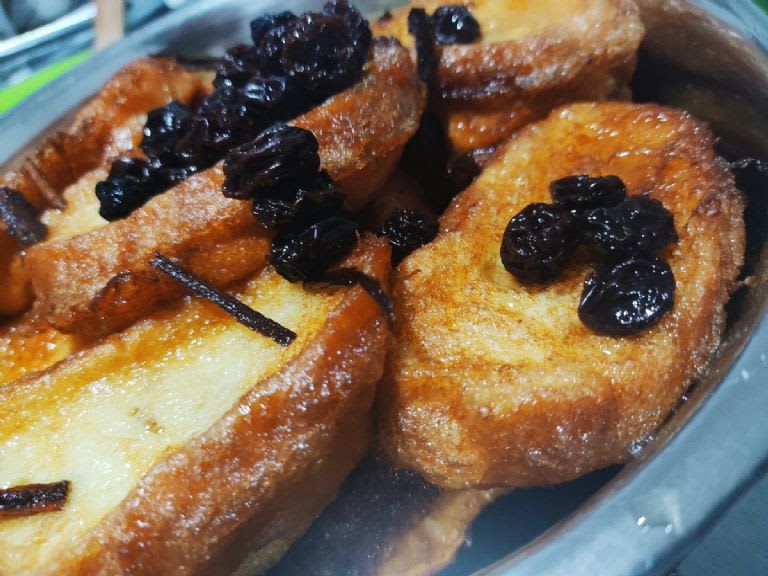
This dessert and snack is a classic Yucatecan pastry, easy to prepare and inexpensive, so it was baptized as caballero pobre (poor gentleman).
One of its advantages is that it allows the use of leftover bread at home. The preparation requires a milk bath, a capeado, and syrup or honey.
A mixture of water, sugar, raisins, cinnamon, and vanilla is simmered until it thickens for the syrup.
While the syrup is being made, mix milk, water, condensed milk (or sugar), and a dash of vanilla in another container. Set this preparation aside.
A batter of beaten egg whites and yolks is made, and the bread cut into slices is dipped first in the milk preparation and then in the egg preparation.
Finally, the portions are fried and bathed with syrup.
19. Stuffed Cheese
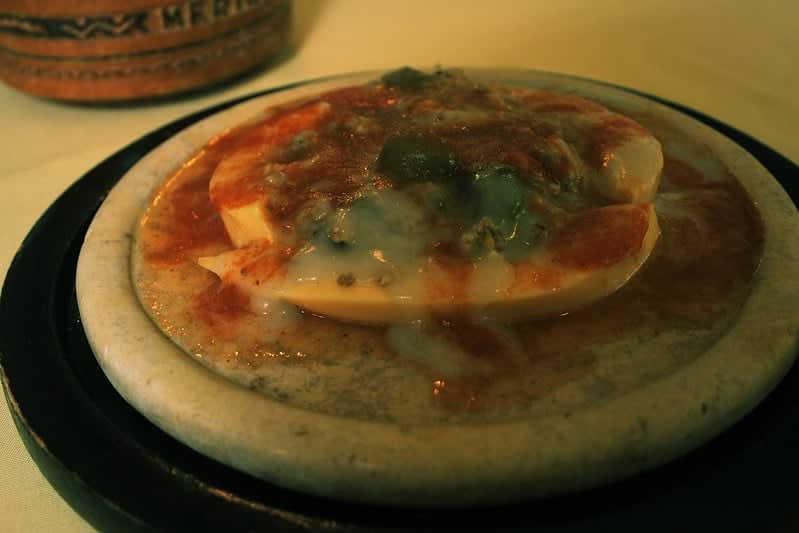
Another typical dish you can’t miss is this cheese stuffed with pork mince, whose preparation is handmade.
You take a ball of cheese (such as Edam), hollow it out, and fill it with the pork mince, olives, raisins, capers, boiled egg, sweet chile, and other ingredients that vary according to each cook’s recipe.
The stuffed cheese is covered and steamed. It is bathed with two sauces, a thick white one called kol made with cornflour and epazote and another red one prepared with tomatoes and chiles.
There is no agreement on how the recipe originated. One version states that it began when a Dutch ship ran aground in Yucatan loaded with Edam cheeses.
Another suggests that the cheeses were smuggled through Belize.
20. Lomitos de Valladolid
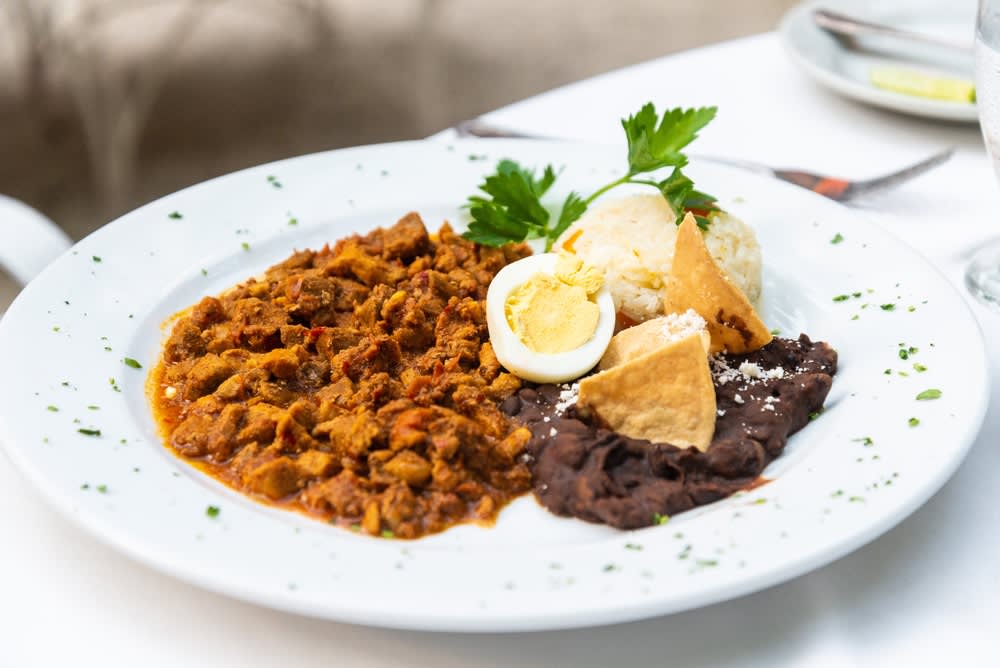
Lomitos is one of the best local dishes you can taste in Valladolid Yucatan.
They combine diced pork cooked in water and a sauce of boiled, peeled, and crushed tomatoes.
When the pork has absorbed the water, add the tomato sauce with a clove of garlic and season with salt and pepper to taste, thickening to the desired texture.
You can add a little serrano chile to the preparation if you want a touch of spice.
It is served with slices of hard-boiled egg, white rice, black beans, and tortillas.
21. Xtabentun Liqueur
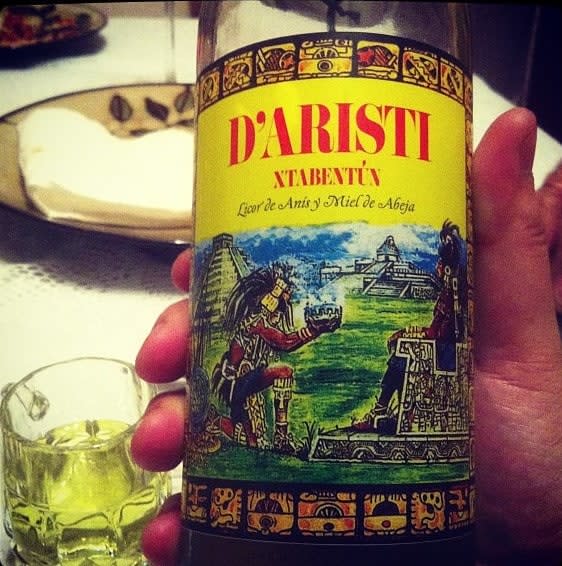
This 100% Yucatecan liqueur is a mead prepared with honey from melipona bees, nectar from xtabentun flowers (a woody vine typical of Yucatan), and aniseed.
The Spaniards brought aniseed to sweeten and smooth the taste, as they found the original Maya recipe too strong.
The xtabentun flowers have seeds rich in hallucinogenic compounds.
The drink is served plain, chilled, or on the rocks and is a perfect digestive after tasting a Yucatecan cuisine dish.
Top Yucatan Foods: Conclusion
As you’ve learned today, the Yucatan Peninsula offers various unique and delicious foods that will tantalize your taste buds.
From the spicy and flavorful Cochinita Pibil to the refreshing and citrusy ceviche, there is something for everyone to enjoy.
Whether you are a foodie looking to explore new culinary experiences or simply looking for a tasty meal, Yucatan cuisine is definitely worth trying.
So, next time you are in the region, sample some of these 21 popular Yucatan foods and discover the rich flavors of this vibrant Mexican cuisine.
Have you tried any of these typical Yucatecan foods? Which are your favorites?
Share the article with your friends so they can also get to know the main delicacies of Yucatecan cuisine. Buen provecho!






